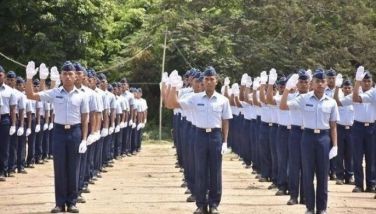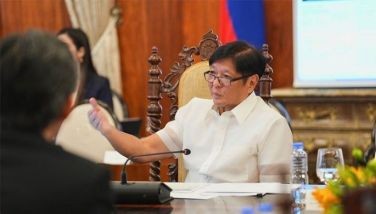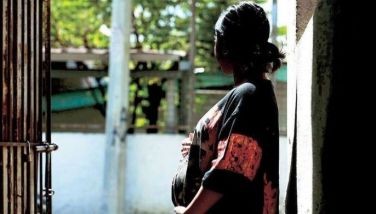Nearly 2M Filipino tourist workers affected by COVID-pandemic — ILO report

MANILA, Philippines (The Filipino Connection) — Nearly two million Filipino workers in the tourism sector 15.3 million tourist workers in Asia Pacific to be hit hard by the COVID-19 pandemic, says a United Nations agency's arm for the said geographic region.
A recent report by the International Labor Organization - Regional Office for Asia and the Pacific said that more than 15.3 million jobs in the tourism sector in 14 countries of the region are impacted by the COVID-19 crisis. These impacts are through shortened working hours, extended or unpaid leave on partial wages, or job displacements.
ILO based its estimates on the 14 countries on the latest labor force survey data available. In the case of the Philippines, it was the fourth quarter results of the Labor Force Survey (LFS) of the Philippine Statistics Authority (PSA) that was the basis.
The October 2019 round of the LFS showed that about 8.5% of the country's 42.429 million workers are in the "accommodation and food services" employment sector. The figure translates to some 1.909 million workers.
These tourist workers are the fifth largest Filipino workforce by employment sector, PSA data show.
ILO estimates show that most of the Filipino tourism workers are in "food and beverage service sharing activities" with 69.1%. They are followed by tourism workers found in "sports and recreational activities" (13%) and "accommodation for visitors" (11.3%).
This includes among others staff of airlines, hotels, travel agencies and transport companies within the region. In Southeast Asia, Thailand has the highest share of tourism employment reaching 9.0%, followed by Vietnam (6.9%) and Cambodia (6.7%), respectively. Nepal and Sri Lanka has the highest shares of jobs in tourism for South Asia, reaching 8.1% and 6.1%, respectively.
More than three in four workers in tourism sector in many Asia and Pacific countries are in informal jobs, likewise “leaving them especially vulnerable to the negative impacts of the COVID-19 crisis," the ILO wrote in its report COVID-19 and employment in the tourism sector: Impact and response in Asia and the Pacific.
What has characterized informal sector jobs are the lack of basic protection, as well as social protection coverage. Workers who continue to work in hotels, airlines or other hospitality industries typically don’t have the option to work remotely, which puts them at high risk of COVID-19 infection.
Informal workers who will get sick may be disadvantaged in access to health-care services and they have no income replacement if they stop working in case of sickness or lockdowns, the ILO said.
In reaction the COVID crisis, various governments in the region have introduced stimulus packages and other policies directly supporting the tourism industry. Despite this, near bankruptcy conditions of tourism-related businesses are already rising.
This is already being felt as Cavite province Gov. Jonvic Remulla (in a Facebook post Tuesday) said the Philippines’ Calabarzon region, reportedly was the ‘hardest hit region in the Philippines.” It lost about P10 billion in overall productivity (regardless of economic and employment sectors).
He also cited the closure of hotels in Tagaytay City, the beach resorts in municipalities such as Naic and Tanza, and the closure of malls. This is not to mention that in mid-January, Tagaytay City reeled from the eruption of Tall Volcano.
Remulla estimates about "100,000+ employees from Cavite to Manila dislocated.”
ILO said the design of COVID-19 policy responses focusing on the crucial role of decent work is key to mitigate the adverse impacts on tourism enterprises and workers and to achieve a sustained and equitable recovery of sector.
It concluded that the COVID-19 pandemic and the ability of countries to cope with its impacts, likewise bring to light the importance of labor standards and social protection systems, especially in application of sick pay and special leave arrangements.
Also, with many workers in the tourism sector working outside the formal sector, COVID-19 response in Asia-Pacific region must have a component of ensuring the livelihoods of informal workers.
On Sunday, Tourism Undersecretary Benito Bengzon Jr. (in a radio interview) said the Philippine tourism industry is looking at ways to resuming operations while observing prevailing physical distancing and health regulations.
The possible new normal being proposed in the industry is to reduce the number of visitors to be accepted at tourist sites, particularly top destinations like Boracay. It also includes filling a tourist bus only at half of its passenger capacity and limiting seating in restaurants, most especially famous buffet establishments.
Bengzon admitted though that the said measures would have cost implications and affect the tourism businesses’ revenue streams.
The Department of Tourism grapples hopes it could get back on its feet perhaps “in the latter part of this year” or maybe next year. This is while the department has yet to complete its Tourism Response and Recovery program, aimed at opening up and promoting domestic tourism first.
At the moment, some resorts and hotels are being used as quarantine centers for returning and repatriated overseas Filipino workers.
The Department of Trade and Industry has already allowed hotels in areas under "general community quarantine." However, easing of restrictions in the said areas that have low-to-moderate risks to SARS-CoV-2 would be gradual.
The national government expects to release today the guidelines for relaxing quarantine restrictions by April 30.
The Filipino Connection is a regional partner of Philstar.com.
- Latest
- Trending
































